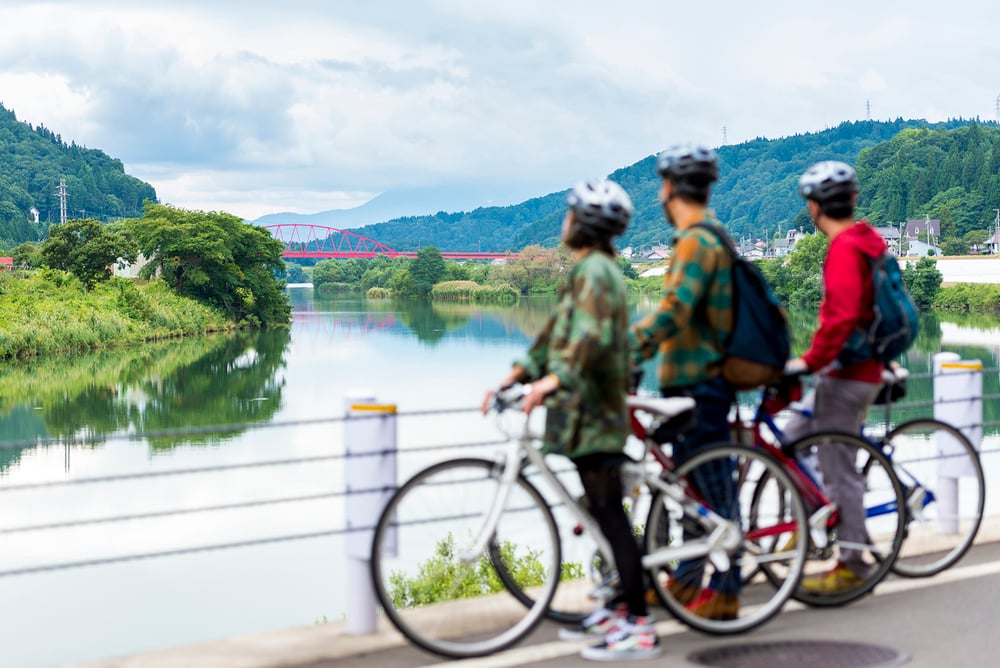Cycling through Snow Country from Iiyama to Sakae Village
Take in the idyllic scenery of the Japanese countryside on this 32.5-kilometer cycling route along the Chikuma River.
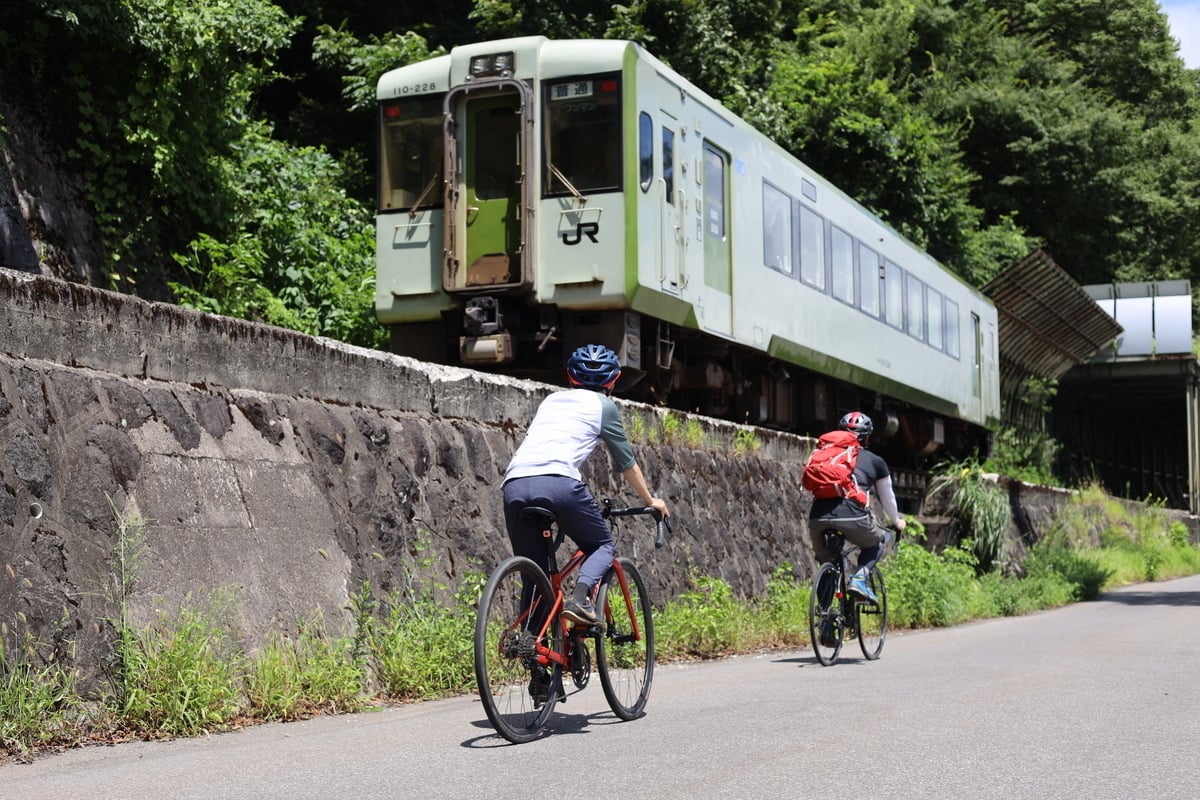
In the Iiyama region of Northern Nagano, rice paddies extend along the Chikuma River at the base of the Sekida mountains. The relatively flat landscape is dotted with traditional farmhouses and small villages, and the occasional vermillion bridge crosses the river, contrasting against the vibrant greenery all around.
With the Hokuriku Shinkansen bullet train stopping at Iiyama Station, you can easily reach Iiyama to enjoy the outdoors and Japan’s traditional countryside scenery. And with the addition of the Cycle Train, operating between Iiyama and Mori-Miyanohara stations along the JR Iiyama line, you can take a ride out into the countryside and relax knowing that you can take the cycle train back to your starting point once your legs give out!
In this article, we’ll be introducing a scenic cycling route that spans the full length of the cycle train.
Cycling through Snow Country from Iiyama to Sakae Village
Route Map and Details
Starting Point: Iiyama Station
Ending Point: Mori-Miyanohara Station
Distance: 32.5 kilometers
Elevation Change: +500 meters / -520 meters
Average Duration: 5 hours
The route from Iiyama Station in Iiyama City to Mori-Miyanohara Station in Sakae Village follows the Chikuma River north for a total distance of 32.5 kilometers. Utilizing the Iiyama line Cycle Train or dropping off your bike at Mori-Miyanohara, you can cycle one-way and relax on the train as you head back to Iiyama.
It remains relatively flat during the first third of the course and encounters small hills during the latter two-thirds. Additionally, the first third includes a variety of stopping points where you can get something to drink or eat, while the latter two-thirds does not (excluding a few drink vending machines here and there).
Rental Cycles and Fees
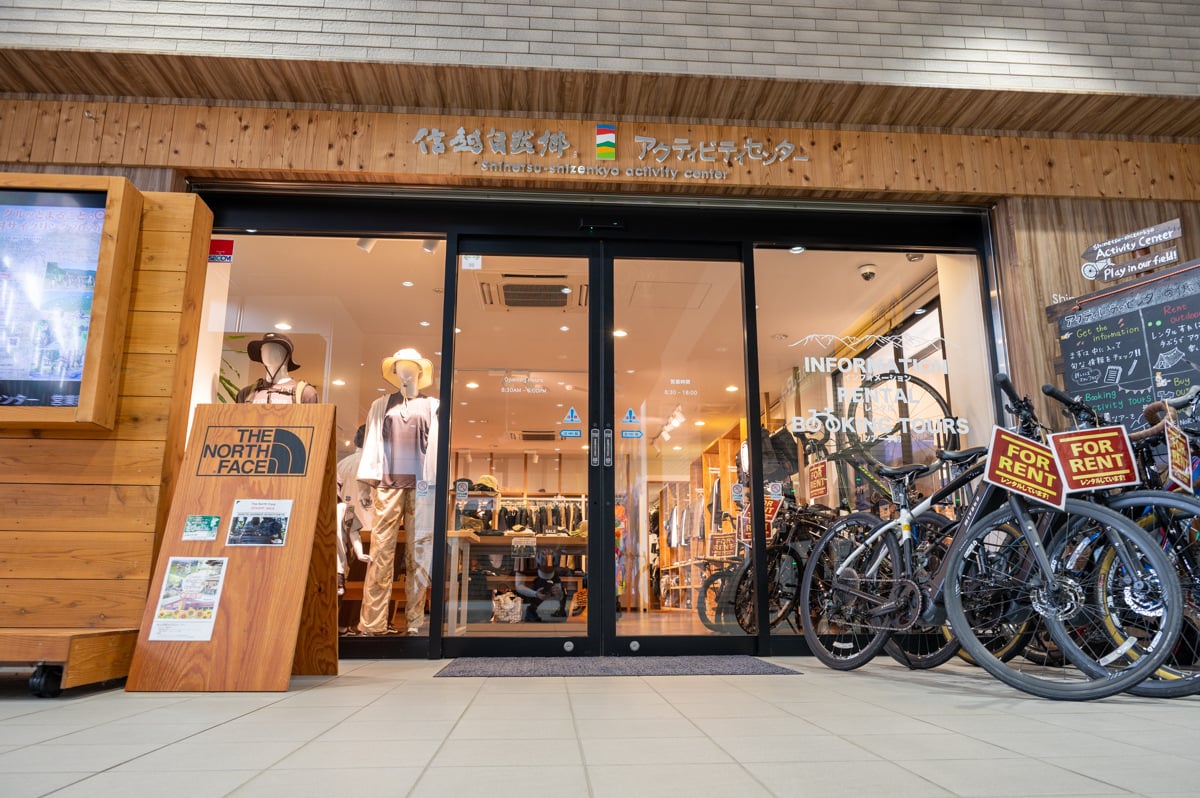
The Shin’etsu Shizenkyo Activity Center in Iiyama Station sells and rents a variety of outdoor gear. You can rent road bikes, cross bikes, mountain bikes or ‘mama-chari’ bikes in both non-electric and electric types. For the 32.5km ride to Mori-Miyanohara Station, a road bike is recommended (electric or non-electric is up to you). See available rentals on the activity center’s official website.
The Cycle Train Plan
The Cycle Train Plan is a seasonal offering that bundles together rental fees and cycle train fare.
Cycle Train Plan Period: from April 1st to November 24th, 2025
Cost: 2,500 yen on weekdays, 3,000 yen on weekends and holidays
Includes: Rental Cycle (electric or non-electric bike), Rental Helmet, 500-yen Food Coupon and Cycle Train Pass
Not included: Train fare
One-Way Drop-offs
There are drop-off facilities near most of the stations of the Iiyama line, so even if the Cycle Train isn't available, you can still ride one-way routes and drop off your bike before riding the train back. For this route, the closest drop-off station is at the Sakae Earthquake Disaster Reconstruction Memorial Hall Kizuna just next to Mori-Miyanohara Station. The fee for one-way drop-off is 2,000 yen.
After getting your rental bike fitted with the Cycle Train pass, you’re ready to head out on a day of adventure in Iiyama.
Cycling Course Experience
Cycling through the Streets of Iiyama
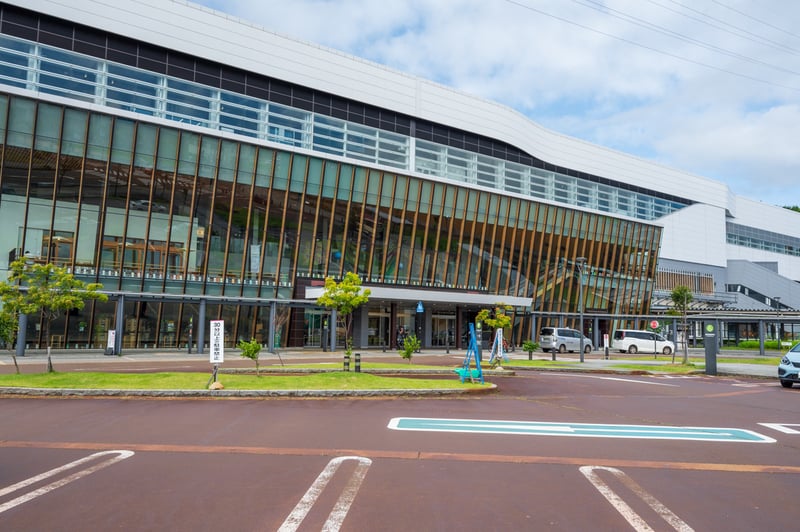
JR Iiyama Station
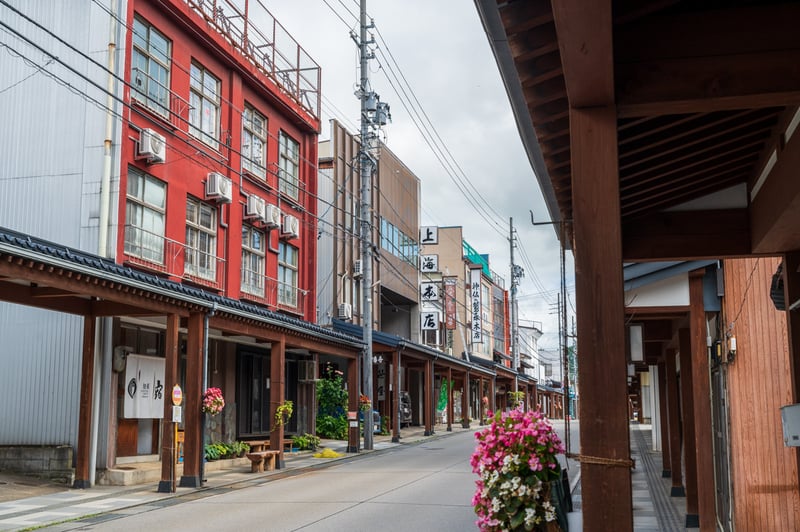
Iiyama's Butsudan street with covered sidewalks
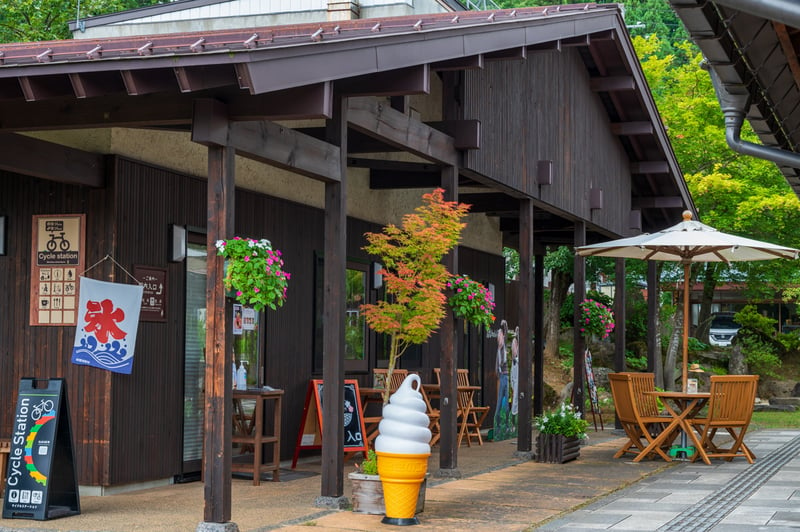
A shady cafe space at the Takahashi Mayumi Doll Museum
The scenery of Iiyama changes suddenly from the glittering modernity of Iiyama Station to small streets lined with Showa era buildings. Store windows are littered with knick-knacks, some traditional and some more recent. Pots of flowers add a touch of vibrancy to the surroundings.
Many of the features of the townscape are a result of the heavy snowfall in winter. Covered sidewalks along Iiyama’s butsudan avenue protect passersby from the snow. And a constant flow of hot spring water (only in winter) keeps the streets from freezing over. The residue from the mineral content in the water paints Iiyama’s streets a rusty brown.
There are a few points to stop along the way if you’d like to take in Iiyama’s local culture. The area is known for its Butsudan, or Buddhist funerary altar, craftsmanship, and numerous butsudan shops line its main street. The intricate metal and woodwork are exquisite. Just beyond said street is the Takahashi Mayumi Doll Museum, where adorable dolls of elderly men and women go about their everyday lives in the countryside in a series of dioramas. Many of the scenes you find here may be replicated as you cycle further towards your destination. And at the edge of town by the Chikuma River is Bunzo, a chocolate shop operated by the inventor of nama chocolate, Kobayashi Masakazu. It has an indoor cafe space and small outdoor terrace, where you can enjoy a warm drink or delicious chocolate soft-serve.
Riding Along the Chikuma River
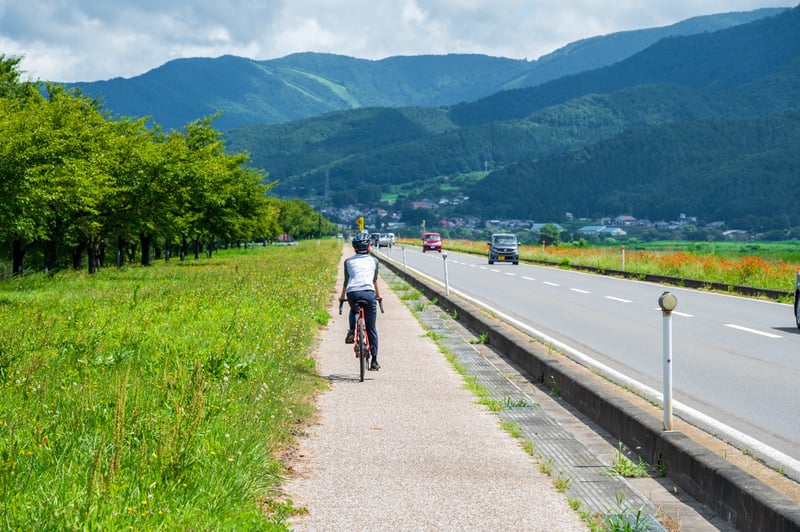
A long, flat stretch of road with beautiful cherry blossoms in spring
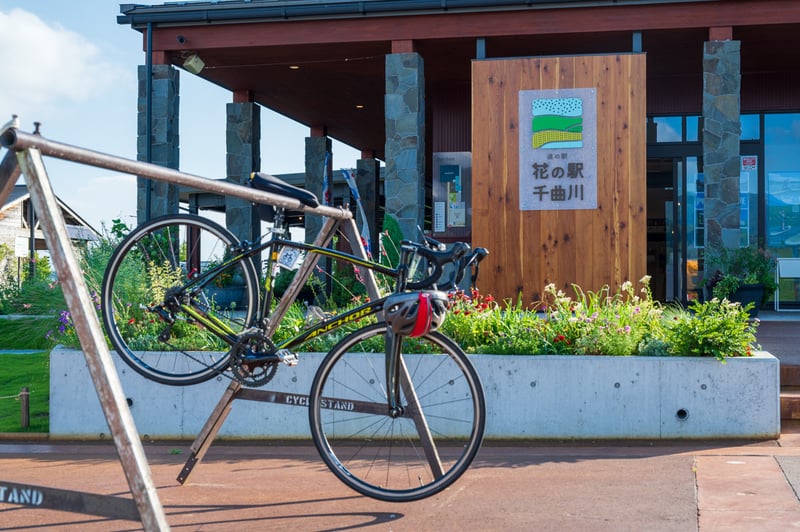
The Hana no Eki Chikumagawa Roadside Station
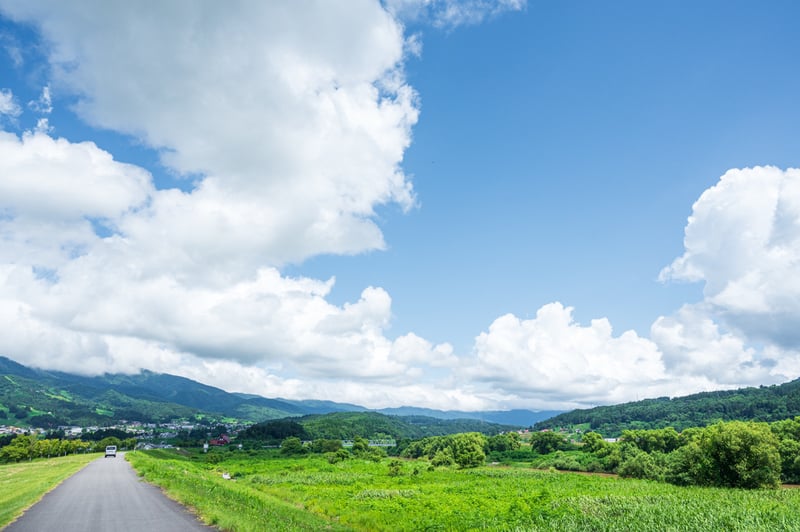
Another scenic stretch of flat road towards Yutaki Onsen
The Chikuma River (called the Shinano River in Niigata) is the longest river in the country, extending from Mt. Kobushigatake on the border of Nagano, Saitama and Yamanashi prefectures all the way to the Sea of Japan. Like its name “River of One Thousand Turns” implies, the river undulates back and forth as it heads north towards the sea. On either side of the river are vast fields of rice dotted with the occasional, red-roofed farmhouse.
The main road follows an embankment along the river, and to the left is a row of 700 cherry trees that extends for four kilometers along the road. On the right, wide open fields expand at the base of the mountains. It’s easy to speed along and take in the views on this flat straightaway.
Halfway along the road is Iiyama’s roadside station. Inside is the Satowa restaurant, a farmers’ market, and a Montbell outdoor goods shop. This is a great place to stop for a drink and snack and take a short rest.
Cycling along the Iiyama Train Line
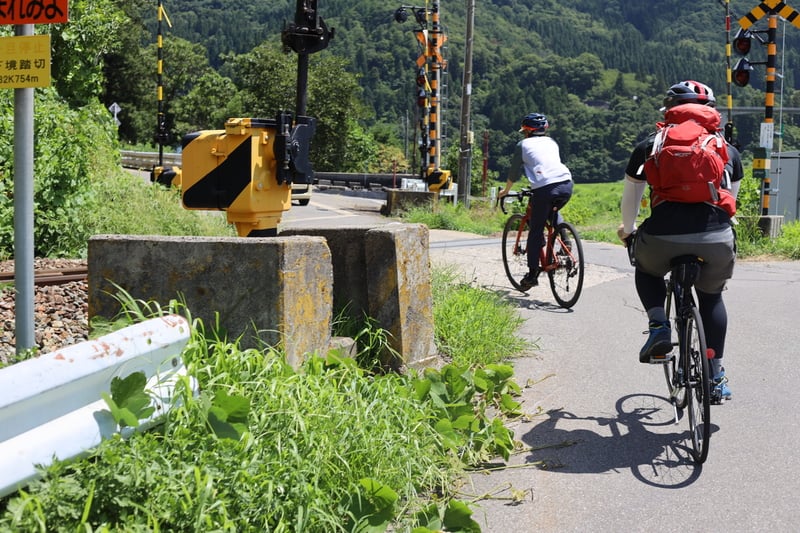
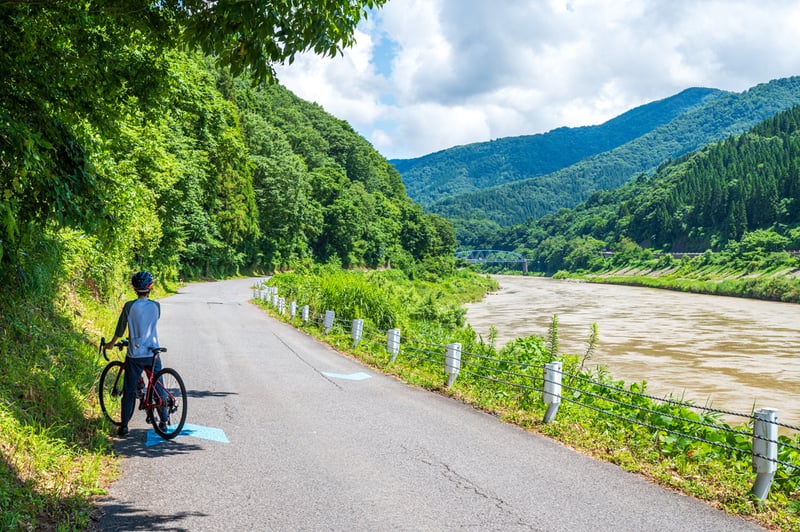
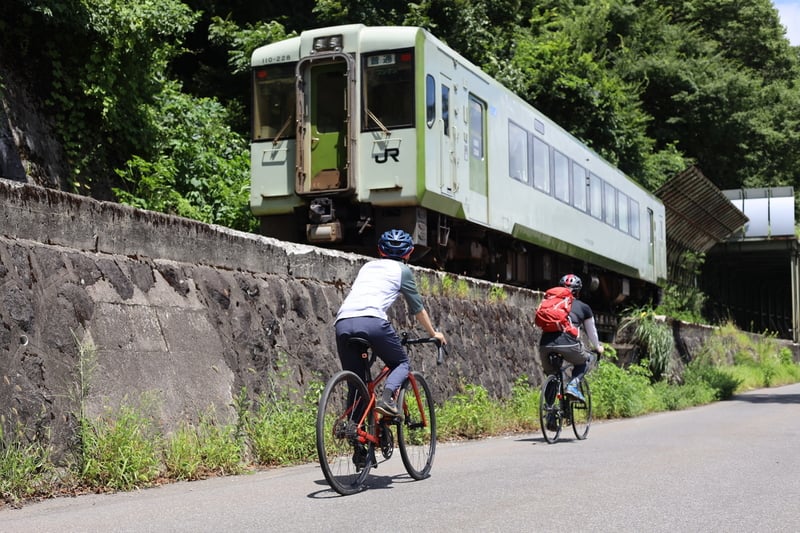
As you pass Togari-Nozawa Onsen Station around the end of the first third of the course, the Iiyama train line rides up alongside the river with the cycling route sandwiched between. It’s almost guaranteed, unless you cycle at an ungodly speed, that you’ll meet the train at some point during this second stretch of the journey.
Around Yutaki Onsen, a local hot spring facility near the base of Nozawa Onsen Village, the route becomes hillier, but for the most part the climbs don’t last long. Small clusters of farmhouses dot the road as it continues to follow the river.
Make the Climb to Sakae Village
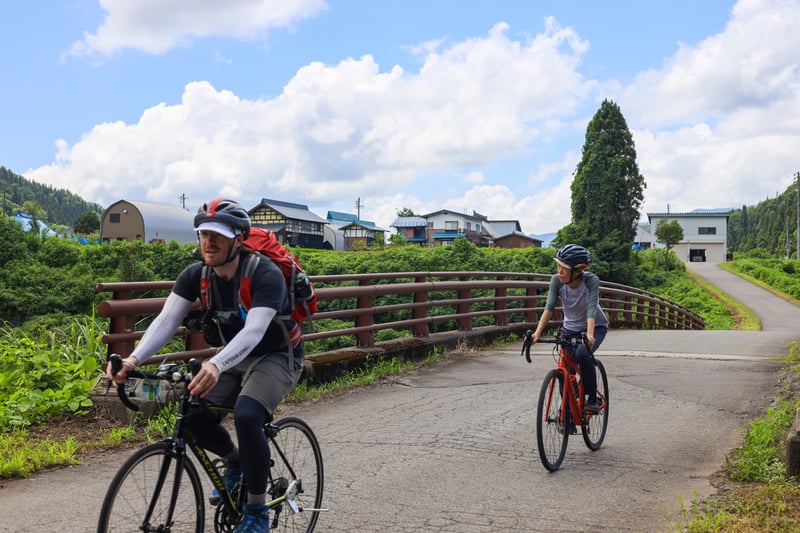
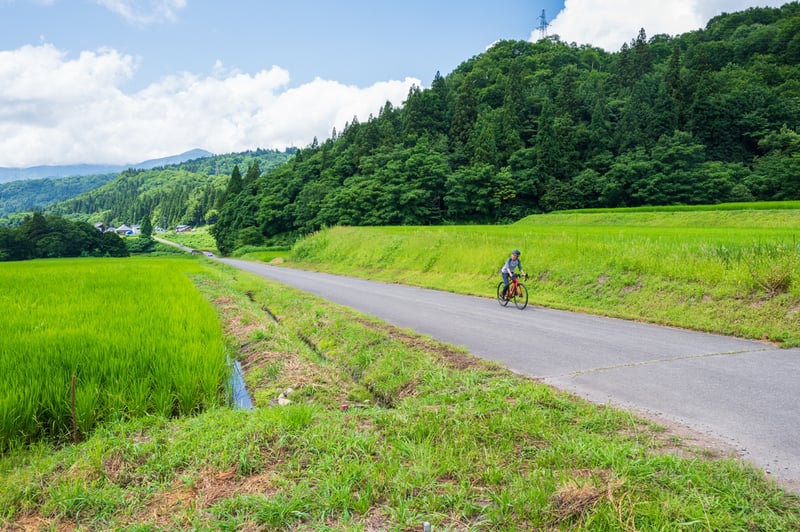
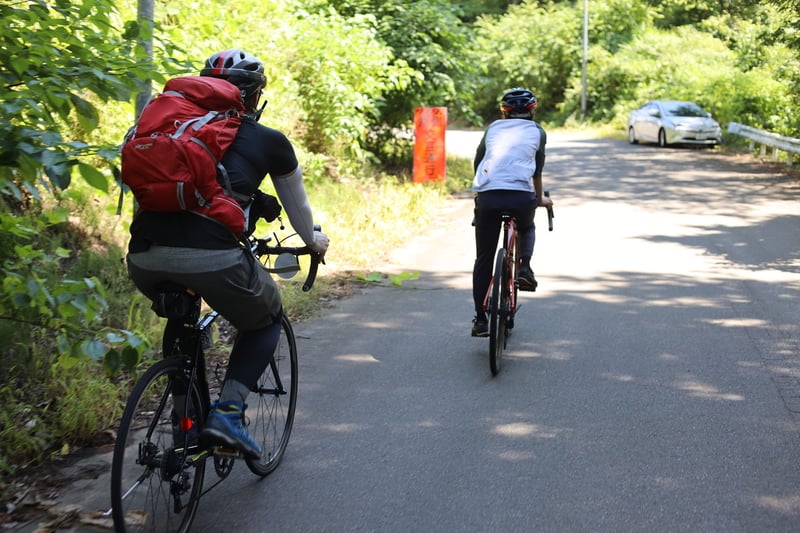

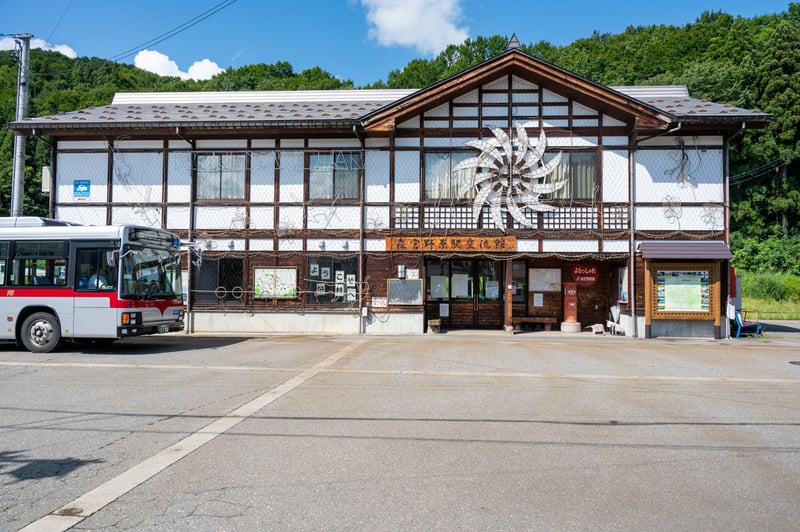
Mori-Miyanohara Station
The last third of the journey involves a few hill climbs, starting with the first at the Nishi Otaki Snowshed, a covered section of road about 450 meters in length. After finishing the first climb, the cycling route takes a sharp left into a shady side street and continues beside the main road.
Turning off before the Yokokura Tunnel, the route passes through another section of rice fields before the last and longest climb—approximately 2 kilometers in total. After this endurance test, you’re rewarded with excellent views of the Iiyama line train and the Chikuma River below the Aokura Bridge.
Mori-Miyanohara Station is just a short distance from the bridge, and the rest of the route is all downhill.
After reaching the station, you can have lunch at Fuki-no-To, the small udon noodle restaurant inside, or cycle a little bit further to the Shin’etsu Sakae roadside station.
Take the Cycle Train back to Iiyama
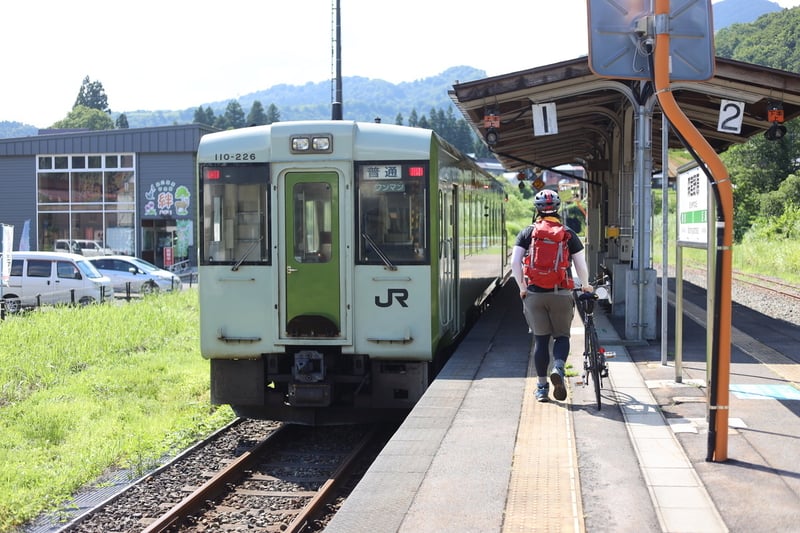
Boarding the train at Mori-Miyanohara Station
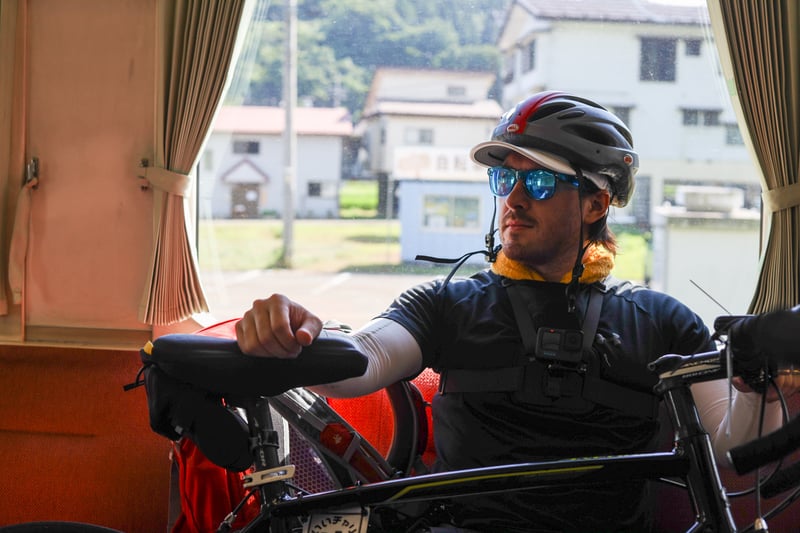
Riding the train
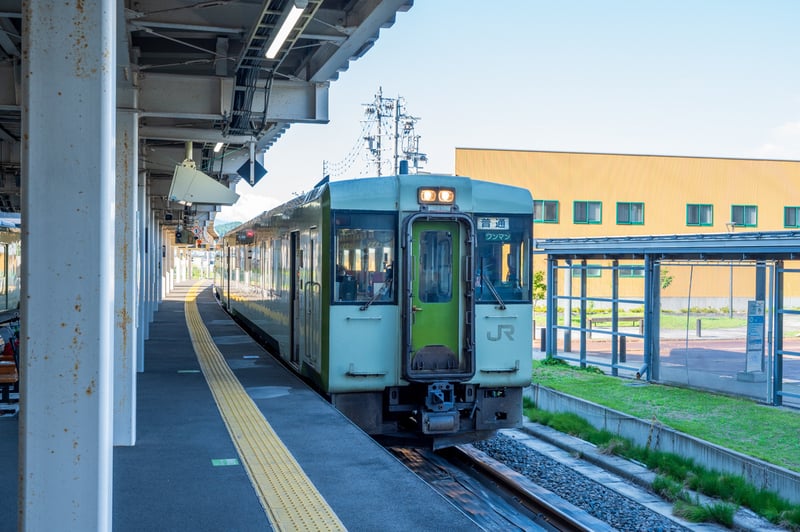
After alighting at Iiyama
When you’re ready to head back to Iiyama Station, purchase your train ticket from the counter at Mori-Miyanohara Station (no automated machines here) and bring your bicycles to the train platform. (If you’re dropping off your bikes instead, take them to the Kizuna building next to the station before heading to the train.)
Unlike trains in the city, the Iiyama line doesn’t open its doors automatically, so press the button to the side of the doors first, then carefully bring your bicycle with you onto the train. There is no designated place for cycle train users to sit, so find any place where you can comfortably hold on to your bike that doesn’t disturb other passengers.
During the ride back, you can enjoy the views of the Iiyama’s countryside from the train car window and see the long stretches of road that you just finished cycling—a second chance to take in this idyllic scenery.
Once you alight the train at Iiyama Station, you can use the elevator at the end of the platform to reach the ticket gate. Hand your ticket to the staff member at the gate and then take the elevator by the escalators to the first floor. The Shin’etsu Shizenkyo Outdoor Activity Center is just where you left it. Return your rentals here.
Access to Iiyama
Along the Hokuriku Shinkansen line, Iiyama Station is easily accessible from Nagano, Tokyo and Kanazawa. From Tokyo to Iiyama Station is about 1 hour and 45 minutes. From Kanazawa to Iiyama Station is about 1 hour and 15 minutes. From Nagano to Iiyama is just 15 minutes by shinkansen (or 50 minutes on the local Iiyama line).
Learn More about Cycling in Iiyama
For more information on bicycle rentals, cycling routes and cycling tours around Iiyama, check out the Shin'etsu Shizenkyo Activity Center's English website at the link below.


